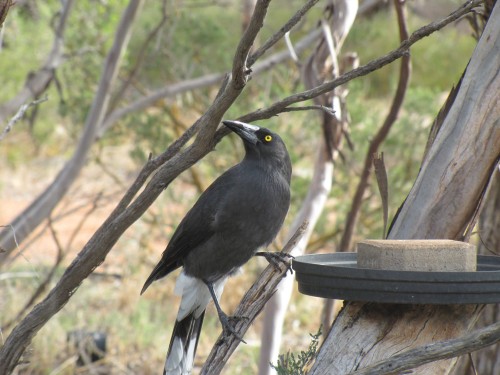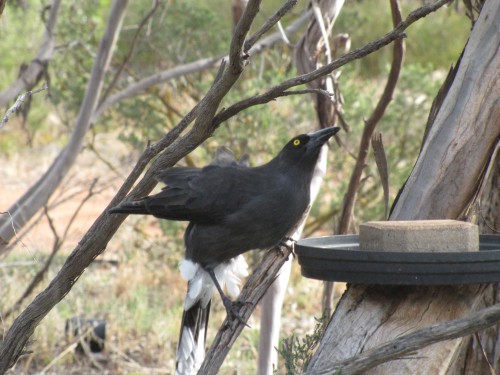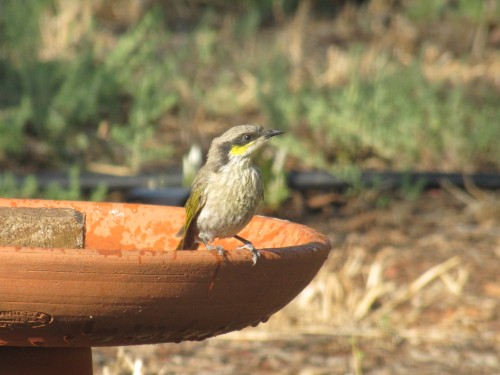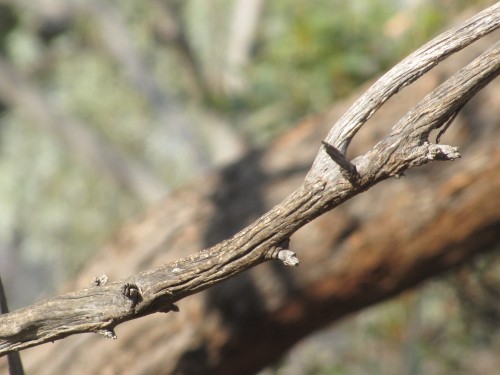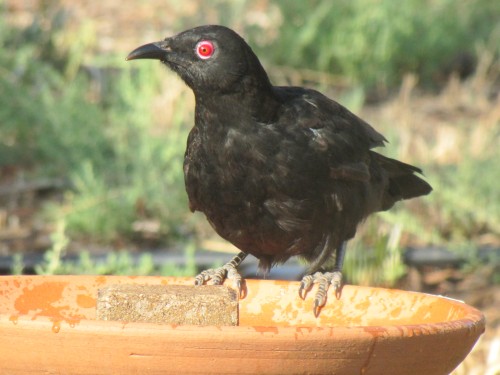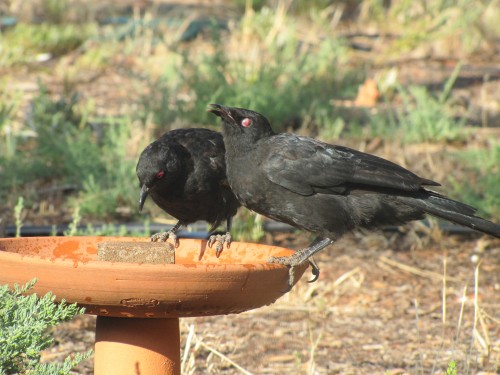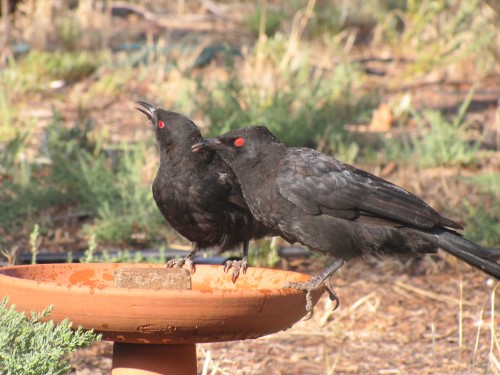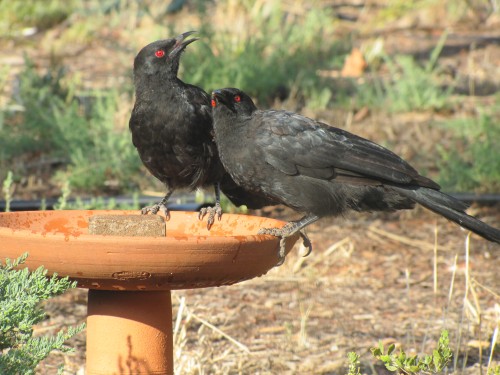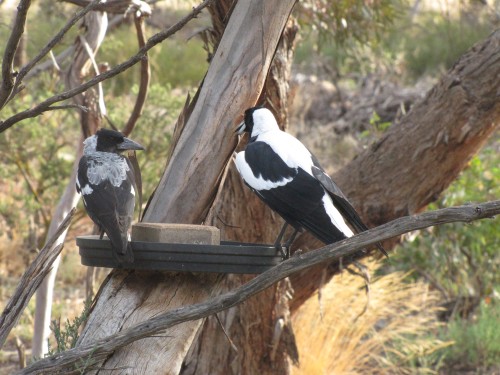Our wrens are back!
Our wrens are back!
When I say “our”, I mean the family of Superb Fairy-wrens who have decided to call our garden their home. Ever since we got back from our recent trip to visit family in Sydney we haven’t seen or heard them. That’s nearly a month and we missed not having them around.
This morning, while having breakfast in our sun-room, we saw two of them fussing around in the bushes near the bird bath. Both of them briefly visited the water for a quick drink. One was an uncoloured male and the other a female. Originally we only had two, a male and female. Then last year a third one joined them; we assume that they had nested and the third one was their offspring.
Now where have they been for the last month or so? In fact, thinking about it, we haven’t heard or seen them since well before we left for Sydney about 7 weeks ago. Have they been quietly nesting somewhere? And if they have been breeding, how many in their family group now? I guess time will tell.
Meanwhile we are looking forward to their cheerful trilling as they feed in the garden and nearby mallee scrub. And we also enjoy seeing them hopping and flitting around as we go about our daily tasks.
The photo of a fully coloured male above was taken in our driveway earlier this year.
Grey Currawong at the bird bath
When moved to our current home and five acre block nearly 30 years ago. Over that time I have recorded over a hundred different species that have visited or flown over. About 40 of those are resident – meaning they can be seen most days – and most of those have been recorded breeding here.
The locally common Grey Currawong was a notable species absent from my lists for several decades. We would occasionally hear one calling in the distance up the hill about a kilometre away. This is an area of thick mallee scrub. They rarely ventured down into our garden.
That all changed about ten years ago. Now this species is a frequent visitor in our garden and we see or hear one or more every few days. I still wouldn’t call it a resident species, though. On a few occasions a local breeding pair have brought their recently fledged off-spring to visit too.
Even rarer is a visit to one of our bird baths, but this, too, is changing. Last week I managed a few good photos of one bird as it was drinking. Those bright yellow eyes are quite penetrating, and I am not surprised that smaller birds – like the thornbills and honeyeaters – get very nervous when the currawongs are around, sending out warning calls. That large beak would easily gobble down a nestling by the look of it.
Singing Honeyeater at the bird bath
Over recent days I have shared some of the photos of birds seen during our recent hot spells of weather. Our bird baths are popular with the resident bird population and we can observe anything up to a dozen species in a ten minute period. Bird Bath Central can get both busy – and noisy.
One of the quieter species to come for a drink would have to be the Singing Honeyeater. They come individually – and occasionally in twos and threes – and never make a great fuss. certainly not like the gregarious New Holland Honeyeaters. I have observed that they tend to come when no other birds are around. The much larger Red Wattlebirds and Australian Magpies are the usual dominant birds, bossing the other species away.
And then we get those interesting birds like that not shown in the photo below. Sometimes the birds are just too quick for my camera. I must make a collection of photos of rocks, twigs, branches and fence posts showing where a bird has just been – but escaped before the shutter was released.
White-winged Choughs at the bird bath
We’ve been having some really long spells of hot weather recently, right up to the last few days when autumn should be gently sneaking in, along with cooler, more mellow days.
During the hot weather I like to keep up the water supply to our various bird baths in our garden. Most of the birds appreciate to fresh water and come for a drink, or a bath and often both. It is not unusual to have a parade of ten or a dozen different species attend the water source in a ten minute period. It can become a busy, noisy airport at times.
When I choose to write or read in our sun room with a good view of several bird baths, I will often have the camera at the ready. The passing procession of birds is a wonderful distraction, but it is times like this that I also get some excellent photos, like those of two White-winged Choughs last week. With the camera on 20x zoom, their bright glowing red eyes take on quite an evil look.
Further reading:
- Time for a bath – a long list of species, both birds and animals, using our bird baths
This post was updated on 20th September 2015.
Australian Magpies at the bird bath
We have quite a few resident Australian Magpies in our garden and on our five acre property. Every year we watch out for nest building time to see which tree they will use; sometimes they refurbish an old nest.
In the hot weather anything up to 6 or 7 of them gather under the shade of our back veranda, often crouching under the easy chairs we have there for extra coolness. The sun in the open on hot days can be as high as 50C or more, while under the veranda it can be 10 degrees cooler – which is still very hot!
Our bird baths are also very popular with all species. Most smaller birds tend to fly off when the magpies occupy the cooling water.
In the photos shown today, the bird on the left is a juvenile, possibly a female. The one on the right is a mature male.

